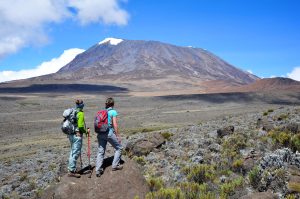Overview of Ngorongoro Conservation Area Tariffs
The Ngorongoro Conservation Area in Tanzania is a UNESCO World Heritage Site and one of the most popular tourist destinations in East Africa. With its stunning landscapes, diverse wildlife, and rich cultural heritage, it attracts visitors from all over the world. However, in order to visit this natural wonder, tourists must pay certain fees, known as Ngorongoro Conservation Area tariffs.
The tariffs for visiting the Ngorongoro Conservation Area vary depending on a number of factors, including the nationality of the visitor, the type of vehicle used for transportation, and the activities planned during the visit. These fees are used to support conservation efforts, maintain the infrastructure of the park, and provide services to visitors.
Factors Influencing Ngorongoro Conservation Area Fees
-
Nationality of the Visitor: The tariffs for visiting the Ngorongoro Conservation Area differ for Tanzanian citizens, East African residents, and foreign tourists. Tanzanian citizens are charged the lowest fees, while foreign tourists pay the highest rates. East African residents enjoy discounted rates compared to international visitors.
-
Type of Vehicle: The fees for entering the Ngorongoro Conservation Area also vary depending on the type of vehicle used for transportation. Visitors can choose to enter the park in a safari vehicle, a minibus, or a motorcycle. The fees for each type of vehicle are different, with safari vehicles being the most expensive option.
-
Activities Planned: Visitors to the Ngorongoro Conservation Area can engage in a variety of activities, such as game drives, guided walks, and camping. Each activity requires a separate fee, which is added to the overall cost of visiting the park. Game drives are the most popular activity and typically have the highest fees.
-
Duration of Stay: The tariffs for visiting the Ngorongoro Conservation Area also depend on the length of stay. Visitors can choose to purchase a one-day pass or a multiple-day pass, which allows them to explore the park for a longer period of time. The fees for multiple-day passes are typically higher than those for one-day passes.
-
Conservation and Entry Fees: In addition to the basic entry fees, visitors to the Ngorongoro Conservation Area are required to pay conservation and entry fees. These fees are used to support conservation projects, protect the natural environment, and provide resources for park management. Conservation and entry fees are mandatory for all visitors to the park.
In conclusion, understanding the Ngorongoro Conservation Area tariffs is essential for planning a visit to this iconic destination in Tanzania. By taking into account factors such as nationality, type of vehicle, activities planned, duration of stay, and additional fees, visitors can ensure that they have a memorable and enriching experience in the Ngorongoro Conservation Area. For more information on booking tours to the Ngorongoro Conservation Area, interested individuals can contact Sunset Africa Safari at info@sunsetafricasafari.com.



